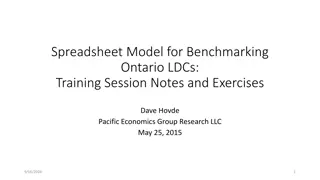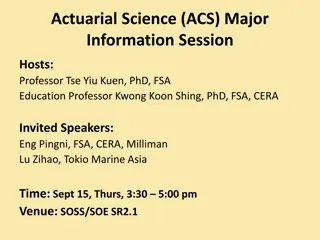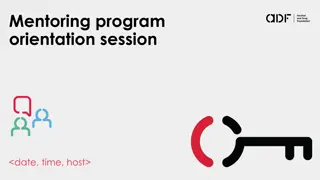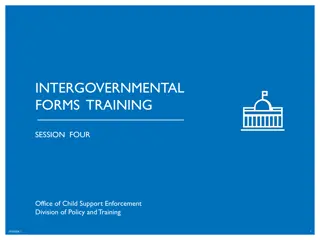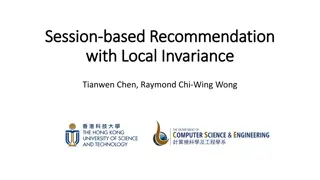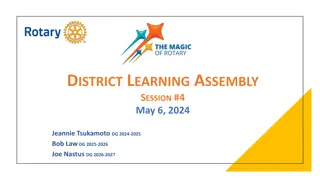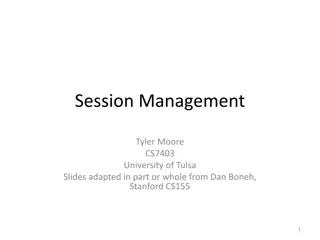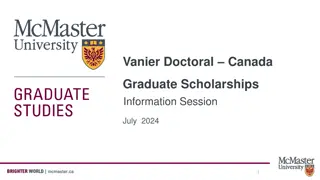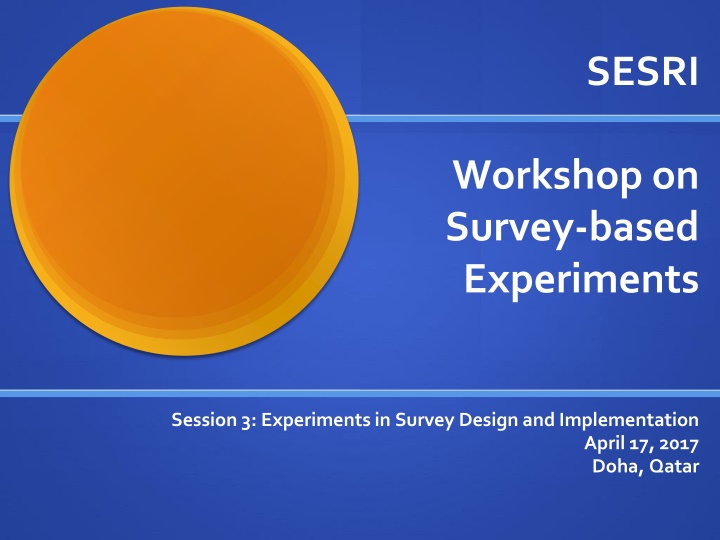
Enhancing Survey Design Through Methodological Experiments and Construct Validation
Explore the significance of methodological experiments and construct validation in improving survey design. Learn about the concept of validity and intelligence in survey-based experiments. Discover strategies for assessing validity and developing new measures to capture concepts effectively.
Download Presentation

Please find below an Image/Link to download the presentation.
The content on the website is provided AS IS for your information and personal use only. It may not be sold, licensed, or shared on other websites without obtaining consent from the author. If you encounter any issues during the download, it is possible that the publisher has removed the file from their server.
You are allowed to download the files provided on this website for personal or commercial use, subject to the condition that they are used lawfully. All files are the property of their respective owners.
The content on the website is provided AS IS for your information and personal use only. It may not be sold, licensed, or shared on other websites without obtaining consent from the author.
E N D
Presentation Transcript
SESRI Workshop on Survey-based Experiments Session 3: Experiments in Survey Design and Implementation April 17, 2017 Doha, Qatar
Outline: Session 3 Beginning to discuss methodological experiments within the TSE model of the survey process By the end of this session, you should have an understanding of how methodological experiments can improve the design of your surveys
Experiments in Construct Validation Do the measures capture the concept? Two key concepts involved here: Tests to validate new measures Efficient survey design to maximize the number of tests within a given budget
The Concept of Validity Validity relates to the congruence or "goodness of fit" between an operational definition and the concept it is purported to measure. A highly unreliable measure cannot be valid if measurements cannot be taken consistently. But a highly reliable measure can also be invalid if the operational link to the underlying concept is not there.
In order to assess validity, we can make: 1) A subjective evaluation of whether the variable is measuring what is supposed to (no correlations) AND/ OR 2) Compare the variable to other measures of the same concept with which it should or should not be related (use correlations)
The Concept of Intelligence Suppose I am interested in the concept of intelligence ? What is that concept?
The Concept of Intelligence Suppose I am interested in the concept of intelligence ? What is that concept? Sometimes researchers are interested in developing completely new measures of a concept because they don t think the current measure is valid. In order to be considered valid, my measure must at least seem to be measuring the right concept.
The Concept of Intelligence Suppose I use a survey and ask the following questions: What is the Emir s name? Who is the Prime Minister? How many members are there on the Doha City Council? Do answers to these questions measure intelligence ?
The Concept of Intelligence Are there any standard measures of intelligence? (Stanford-Binet test) Gale Encyclopedia of Medicine: Stanford-Binet intelligence scales If there are and those measures have been well evaluated and validated, then my new measure of the concept must be correlated with that measure
Convergent Validity An evaluation of a measure based upon other known research using the concept. If a measure is valid, it should correlate with other measures of the same concept, such as previously validated ones.
Discriminant Validity There are some variables with which a measure should not be correlated Intelligence should not be correlated with age A concept may have different meanings for different groups or subsets of units, so scores should differ among them as well
Criterion-related Validity If there is another well-validated measure of the concept, and the values are related to another (criterion) variable, i.e., women have higher IQ scores than men: 1. Concurrent validity: can the new measure also distinguish the present standing of units on the criterion variable? Does my new test of intelligence show women with higher scores than men?
Experimental Validity Testing Suppose we have a new measure of a concept involving 5 questions and want to compare it to three well-validated measures of the same concept: Measure A: 6 questions Measure B: 5 questions Measure C: 5 questions How can we organize the convergent validity test?
Experimental Validity Testing Suppose the sample size is 1,000 One survey with 21 questions (5 + 6 + 5 + 5) = 21,000 items administered Random assignment of each validated measure to 1/3 of the sample of 11, 10, and 10 items = 3,663 + 3,330 + 3,330 = 10,323 items administered Random assignment to of the sample of 21, 11, 10, and 10 items = 5,250 + 2,750 + 2,500 + 2,500 = 13,000 items administered
Experiments in Frame Selection Comparison of alternative frames Comparison of an existing frame to a constructed frame Examples of alternative frames: Landline, Cell phone, Address-based, Registration-based
Frame Problems Typical frame problems that may differ by frame: Non coverage (missing elements) Blanks (ineligible elements) Duplicates Clusters (more than one population element associated with a single list element)
Experiments in Frame Selection What would be the key tradeoffs/differences? Coverage Response rates Costs
Experiments in Frame Selection Comparison of an RDD phone frame (or dual frame design) and an Address Based Sample (ABS) frame for completeness of coverage Link et al. (2008). A Comparison of Address-Based Sampling (ABS) versus Random Digit Dialing (RDD) for General Population Surveys. Public Opinion Quarterly 72: 6-27.
Experiments in Frame Selection: Coverage and Response Rates Basic design elements: Take a large-scale national survey (Behavioral Risk Factor Surveillance System BRFSS) conducted at the state level using RDD-CATI and in 6 states with low response rates; use a split-half sample to include a mail questionnaire with ABS
Experiments in Frame Selection: Coverage and Response Rates Link et al (2008)
Experiments in Frame Selection: Coverage and Response Rates Link et al (2008)
TSE Model: Sampling Error Dutwin & Lopez (2014)
TSE Model: Sampling Error Dutwin & Lopez (2014)






